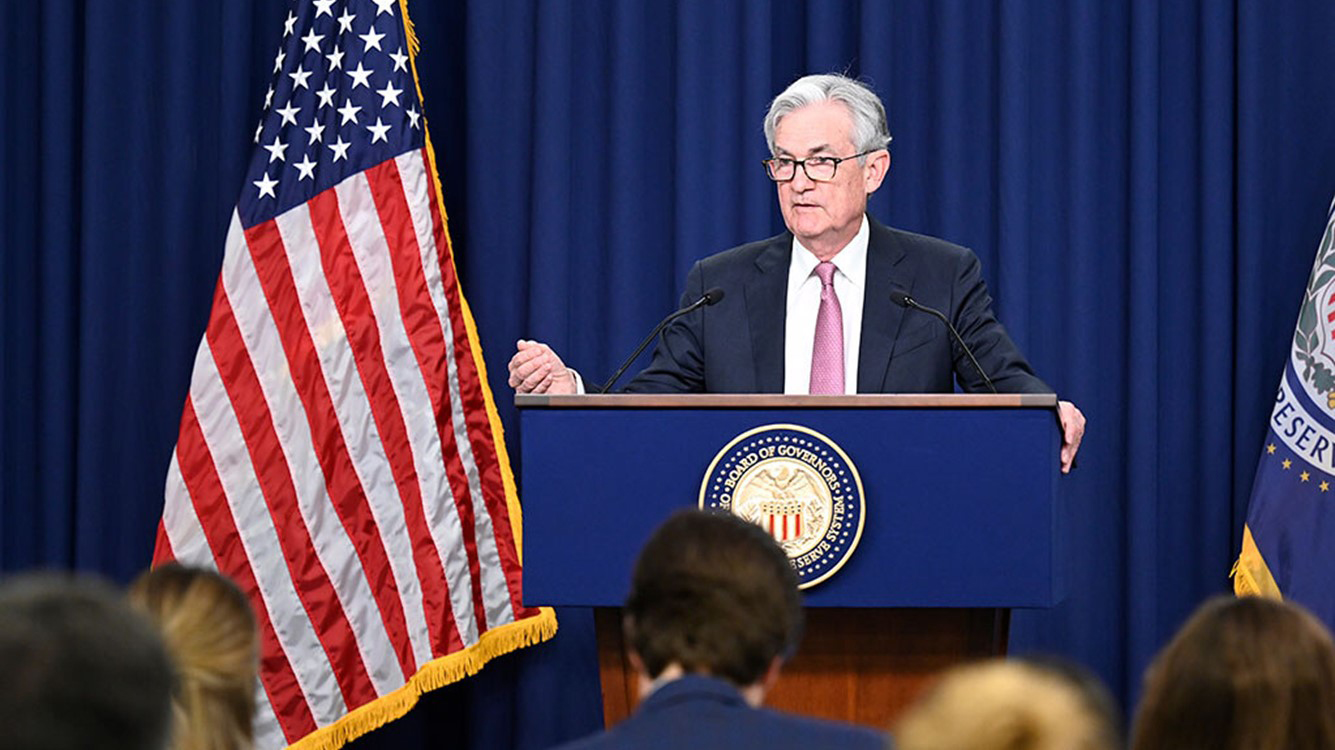Pause with a hawkish clause
Stronger economic growth, in and of itself, justifies higher rates.

September 20, 2023
The Federal Open Market Committee (FOMC) – the policy setting arm of the Federal Reserve – paused at the September meeting. The lack of a move was expected and unanimous. The statement following the meeting upgraded the assessment of the economy, which was already strong, and left the door open to an additional rate hike this year, if necessary. Chairman Jay Powell underscored that the forecast, with the majority still expecting another rate hike, means that the Fed believes another rate hike is "more likely than not."
The irony is that the more that the Fed commits to fully derailing inflation, the more that bond markets can do the heavy lifting for the Fed. The 10-year Treasury Bond rose to 4.37% after the market closed, its highest level since 2007. That is one of many reasons that we are holding to our forecast for no additional rate hikes, even though the Fed is willing to do it. Bond yields could go even higher prior to the end of the year, given the volume of debt that must be issued and risks of a government shutdown. Standard & Poor's and Fitch have already downgraded U.S. Treasury debt in response to the government's dysfunction.
Participants at the meeting upgraded their forecasts for economic growth and the unemployment rate by year-end, reflecting the remarkable resilience of the economy. The outlook for core inflation was downgraded slightly, which reflects the progress made over the summer. The risks around the participants' forecasts have shifted; the economy is now looking more resilient and able to cool without a major increase in unemployment than previously thought.
Stronger economic growth, in and of itself, justifies higher rates than we saw in the wake of the global financial crisis. Hence, a change in the forecasts for rates in 2024, which are now a half percent higher than in June. The shift in the rate outlook extends to what the Fed considers the noninflationary fed funds rate, which is moving up. The era of free money is over because the Fed feels that ultralow rates are no longer necessary to support growth.
What is somewhat fanciful is the complete absence of any major slowdown or significant rise in the unemployment rate. It is a best-of-all-worlds forecast. The Fed clearly feels emboldened that it can achieve price stability without the "pain," a euphemism for much higher unemployment, that it once believed inevitable. The Fed's forecast for unemployment has come down significantly - from recession to non-recessionary territory - since June. The good news is that the high frequency data on wages via job postings suggests that the labor market will continue to cool with a drop in job postings as opposed to an increase in layoffs. Powell said that he always felt a soft landing was possible and that the path to one was plausible.
The optimism in the forecast is a bit stunning given the headwinds the economy faces: spiking energy prices, strikes, risks of a government shutdown, a resumption in student loan repayments and surveys that show consumers are expecting to moderate their spending during the holiday season. This is before the losses associated with office leases show up on bank balance sheets, which will no doubt further tighten credit conditions. Powell underscored the high level of uncertainty regarding those issues, especially with regard to strike effects.
Another issue is Social Security payments. A record surge in Social Security payments in early 2023 set a floor under core inflation measures at the start of 2023. The September CPI is used to determine those increases at the start of 2023. The recent surge in energy prices means that figure will be much greater than previously expected, which could make core inflation stickier at the start of the year.
The Fed is expecting a cooling of inflation to boost inflation-adjusted interest rates, which represent an additional tightening of credit conditions. Powell underscored that the Fed is looking at monthly changes in inflation not just the year-over-year increases in inflation, as that is a better measure of momentum. He underscored that they are looking more closely at six instead of three-month moves in inflation. The Fed needs to see inflation improve over the course of quarters, not months.
Powell emphasized that the Fed will continue its balance sheet reductions. In July, he argued that those reductions would continue even after the Fed started to cut rates. That will create a floor under how low bond yields and mortgage rates fall, even after the Fed starts cutting. Powell said, "the time will come at some point, and I am not saying when, for a cut in rates."
Powell argued that there is a good rationale to move more carefully. The goal is to space rate hikes out and weigh more evidence before hiking further now that the risks of overshooting are more closely aligned with those of undershooting on rate hikes.
When asked about the accuracy of the forecasts and how that has affected the Fed's credibility, Powell responded with humility. He said, "Forecasters are a humble lot with much to be humble about." (Touché.)
The Fed is optimistic about the resilience of the economy and the ability to lower inflation without a major increase in unemployment.
Bottom Line
The Fed is optimistic about the resilience of the economy and the ability to lower inflation without a major increase in unemployment. With that optimism comes an outlook for higher rates for even longer and what is likely to be a much higher noninflationary fed funds rate once the current bout of inflation is tamed. That is the exact opposite of what we saw in the wake of the global financial crisis. Those thinking we will return to pre-pandemic norms on interest rates will be disappointed. A stronger economy with justifiably higher rates and more room to cut when the economy falters is a much better world than the one we left.
Explore more

A “patient and resolute” Fed
The goal is to defeat, not just cool, inflation.

KPMG Economics
A source for unbiased economic intelligence to help improve strategic decision-making.

After the fall: A structural change watch list
Inflation and higher rates are plaguing developed and developing countries alike.
Meet our team

Subscribe to insights from KPMG Economics
KPMG Economics distributes a wide selection of insight and analysis to help businesses make informed decisions.
